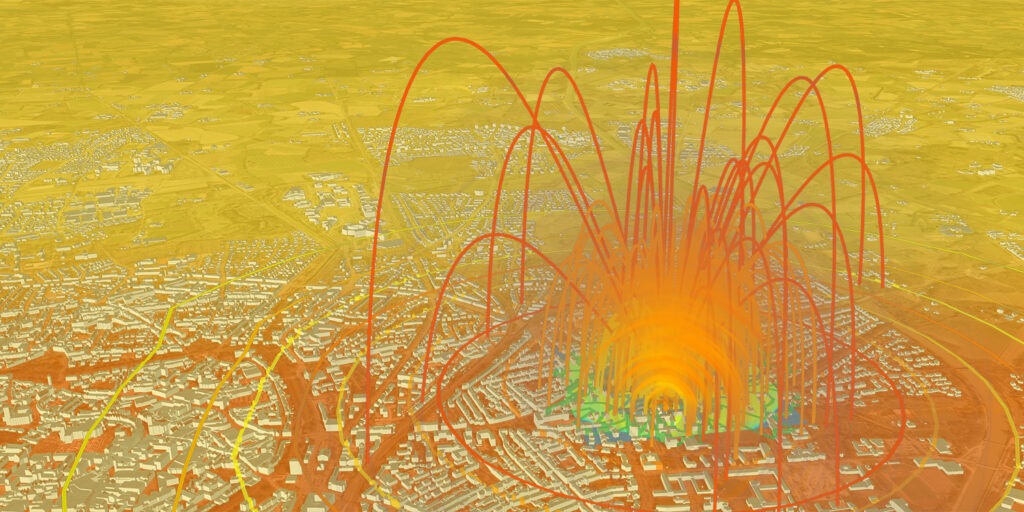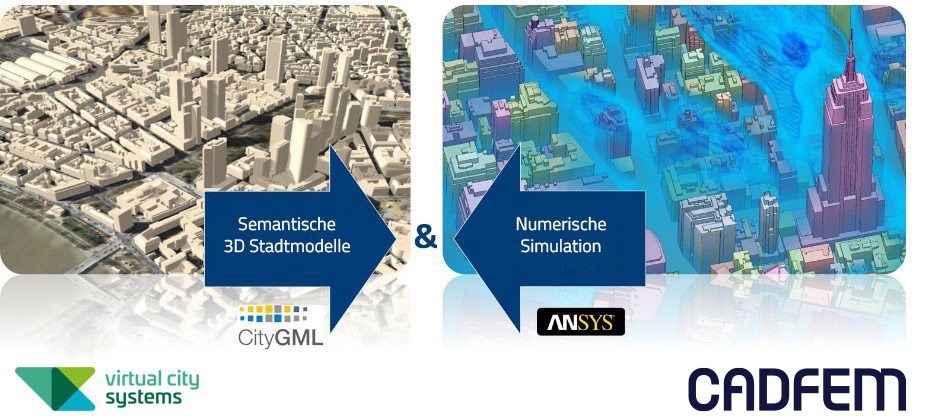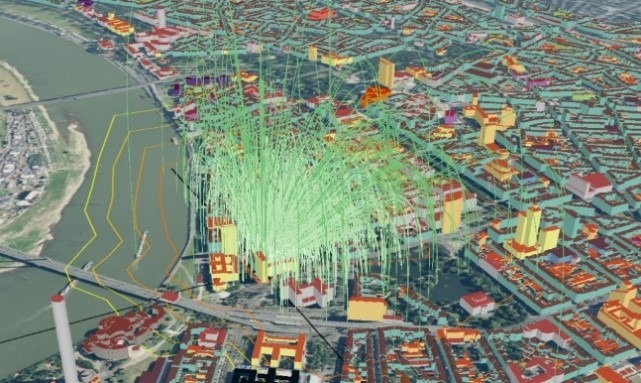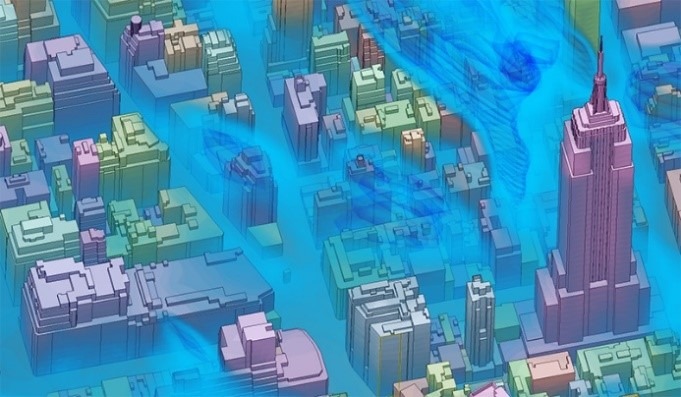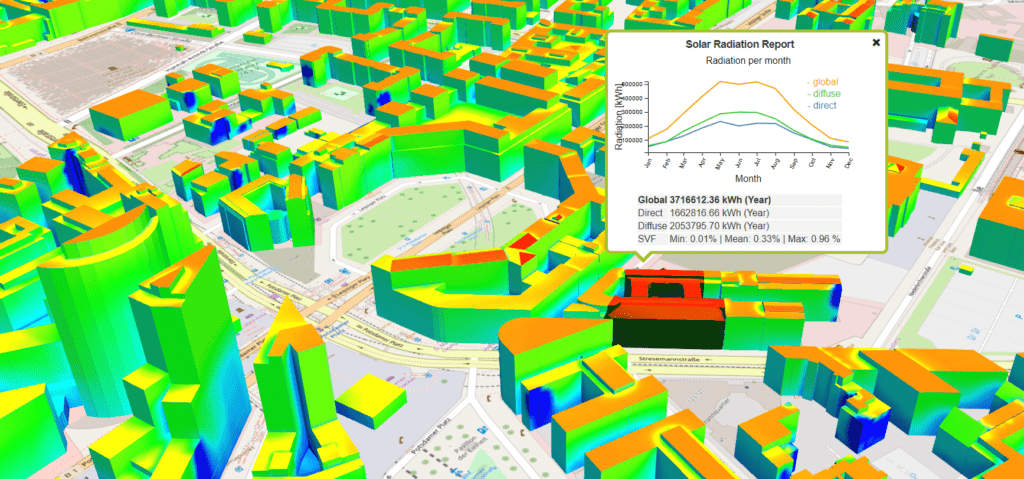The solar cadasters currently available are two-dimensional and only calculate solar radiation on rooftops. But how can the potential of facade surfaces and shading effects be determined in detail for the evaluation of energy measures in an urban context?
Enter our solution for 3D solar potential analysis, which can produce monthly measurements of direct, diffuse, and global solar irradiation on the roofs and exterior walls of buildings. It even factors in the shade caused by vegetation, other buildings, and other objects on the premises in question. Clicking on a building’s surfaces brings up clearly illustrated charts that make it possible to systematically assess monthly and annual trends for every type of radiation (direct, diffuse, global).
